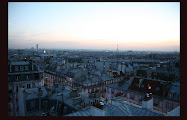"What? Do none of these executives realize that there is a greater threat to their brands called “fast fashion”? How could they not notice? We retailers definitely feel it on the shop floor. When I first started my business, we were selling women’s and men’s ready-to-wear like mad. Anything we stocked would basically sell out. But the ready-to-wear business started to slow down about five years ago and the customers, women and men, became ever-more picky.
The reason? Fast-fashion stores, like Zara, Mango, H&M, Top Shop, started popping up everywhere in the region, just as they did in other parts of the world, seducing all sorts of customers. In the beginning, we thought that these stores would only attract middle class people and that, truth be told, our upscale clientele would never dream of stepping into such stores. Boy, were we wrong. Walk into one of these stores, and you inevitably bump into a very wealthy client, dressed head-to-toe in designer clothing, her hands sporting 20-carat diamond rings and designer watches and carrying a few bags full of fast-fashion merchandise. As a result, I began to edit down all our buying so as to be focused on hard-to-replicate iconic looks from the ready-to-wear collections and on accessories, particularly bags and shoes."
These high street stores/ labels conquered not only the middle-lower class, but also attract the regulars of high-end fashion consumers. This is somehow annoying because, at the end, no one wears REAL fashion anymore, they just wear knock-off for a fraction of price, and only true die-hard fashion lovers would go for the pret-a-porter today, on the other hand, nouveau rich might buy a piece or two when bulk-buying the leather goods and logo pieces, which is all so sickening. I miss the pieces that scream fashion without logo, even if it's a knee length skirt or a pair of pants, they have character and soul and did exist 10-15 years ago, but now could barely survive. High-street stores are good for people who cannot afford the authentics, while however, fashion show pieces got knocked off and cheapened by them, that deeply affects the true consumers' appetites (shopping impulse). Who wants to wear an genuine signature piece with knock-offs everywhere to be seen?
This brings to apply once again to my thought about the theory of current fashion: haute couture plays a role of artform, it sells the parfums, cosmetic and most importantly dreams, they also triggers the inspiration to the next pret-a-porter show, while pret-a-porter is now like how haute couture used to be in the 40s-60s, driving the desire and dominating the mass market to copy (by Zara, H&M et al now vs American department stores and local Parisian tailor then), showing what's hip in silhouettes and details like the good old hemline. Whereas pre-collection has taken up the role of real pret-a-porter, showing wearable pieces for day-to-day wear without strong statements, and that the high street is not (yet) that eager to copy as they are not shown to the mass.
"Take Balenciaga's jacket (F/W07) for example, they promise to deliver sometime not later than September, and our customers still want them, but as soon as they are sold everywhere for 199euro at Zara, Mango and all that, they are done. That's why I think it's important for someone like Nicolas who should do an impeccable show (like S/S08), in this case, the high-street is not interested or impossible to copy, and they don't get to see the Pre-Collection. So we still have a chance (to sell)." the famous buyer/ style maker Maria Luisa Poumaillou from Paris laughed off.
A friend of mine sees the pre-collections like an evil would do fashion no good, which I agree at the beginning but not after a deeper thought. Simply because when digested what I said above and think of the below then you'll get my point... In the days when we only had two pret-a-porter collections annually, say only 35 exit were shown to public, however buyers get to go to the showroom to place order, and they'll see the entire collection full rack in every possible(available) colour in front of them. Some got edited out by the designer or stylist and didn't make it to the show (but doesn't mean they are not good, maybe just not strong enough to make a bold statement and delivery the seasonal message). They, to me, are the ones which made the pre-collection today. Pre-collection gets deliver earlier and spend a longer lifetime on the floor(6months) throughout the season, they are as well-made and designed, if not as exquisite sometimes.
Further elaboration and more clever way to do is to have slightly easier pieces (yet another collection) to mix into the show and pre-collection pieces on floor, which is what Stefano Pilati's "Edition24" doing for Yves Saint Laurent and "Faubourg22" by Alber Elbaz for Lanvin, too. They are more accessible in terms of price point, as the off-the-peg prices are rocketing. What's more? these pieces are usually the in-house iconic pieces with signatures: trench coat, square belt, knits, tulip skirts, bowneck blouse, little jacket in YSL's case, and frayed hem dress, tees, little black dress (you never have enough of 'em), soir after soir in Lanvin's case. These pieces take up the educational role to new generations for the house with history.
Bon! Voilà, this is a truth that we have to accept and it's not going to change or go back to how 15-20 years ago. Real fashion (people, retailers, artists & designers) will survive on a small island, designers like Jeremy Scott, Rick Owens, Viktor & Rolf, Martin Sitbon (who will regain her usage of namesake again in few months' time), Ann Demeulemeester, Dries van Noten ... etc will all remain independent forever after and accept the fact that they would never get the how Gigli, Ferre, Moschino, Versace, Gaultier, Issey et al used to establish themselves and deserve the noise. "There's only 5% of us in the industry" Robin Schulie of Maria Luisa told me.
P.S. pls note a thorough update by the one and only Suzy Mekens at the annual conference















No comments:
Post a Comment